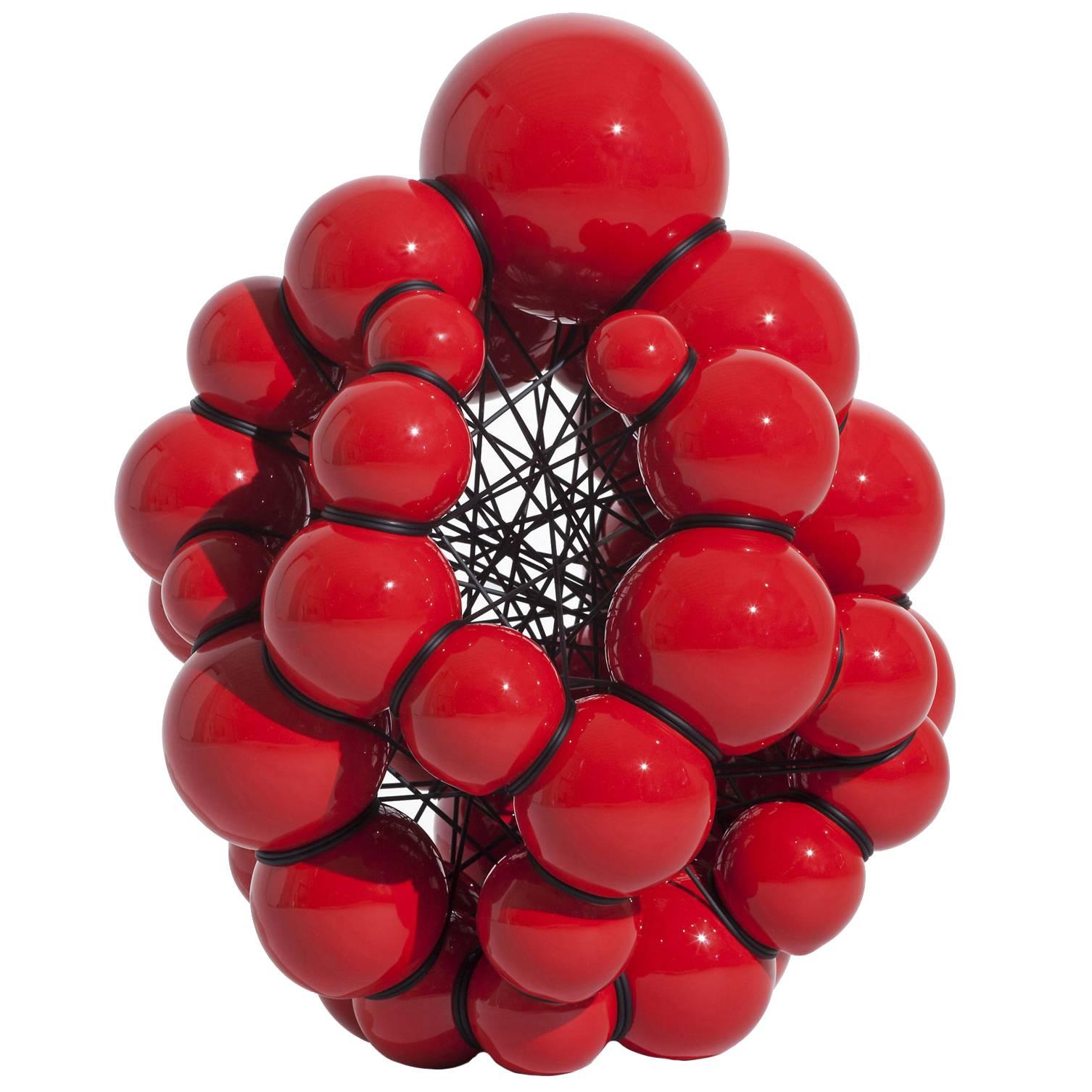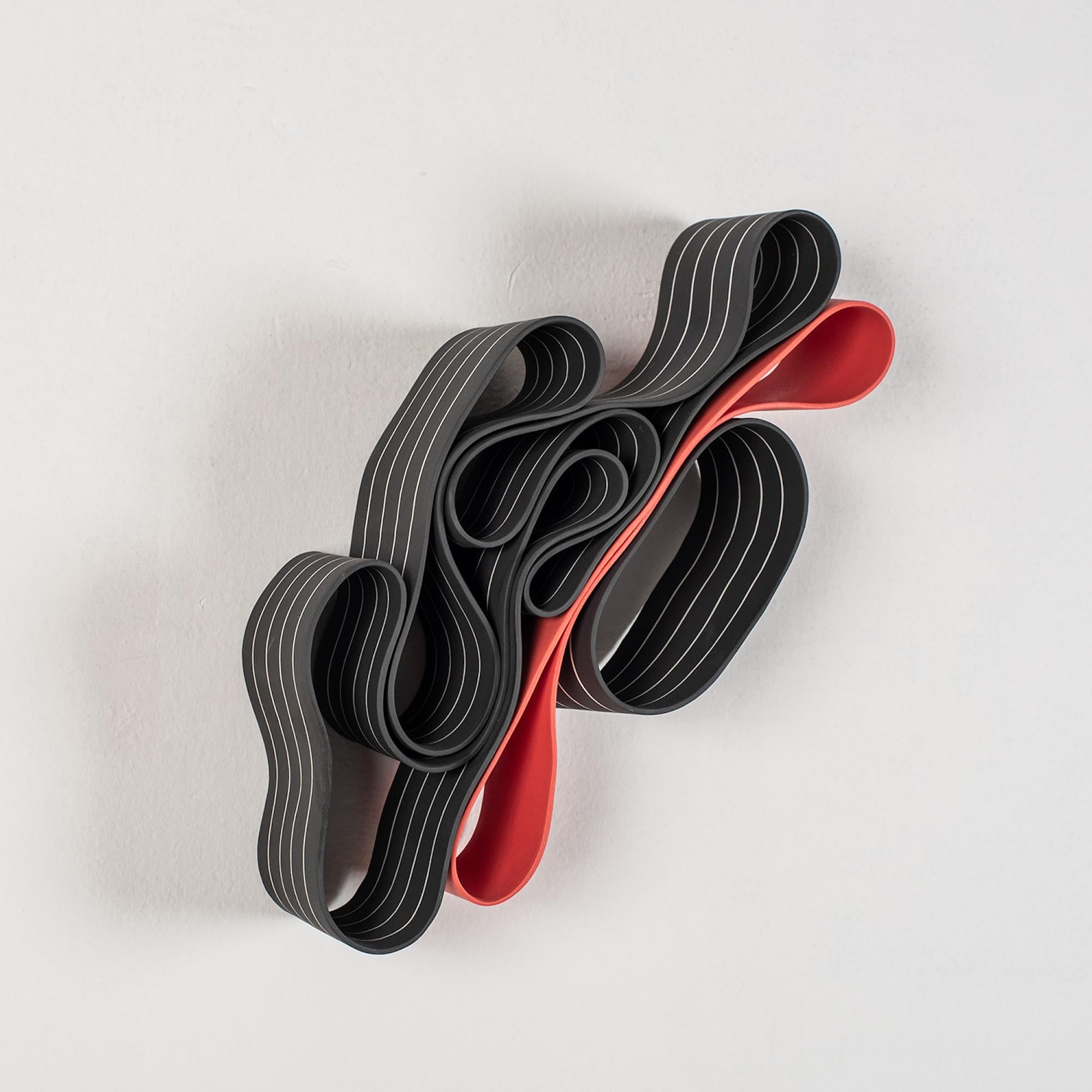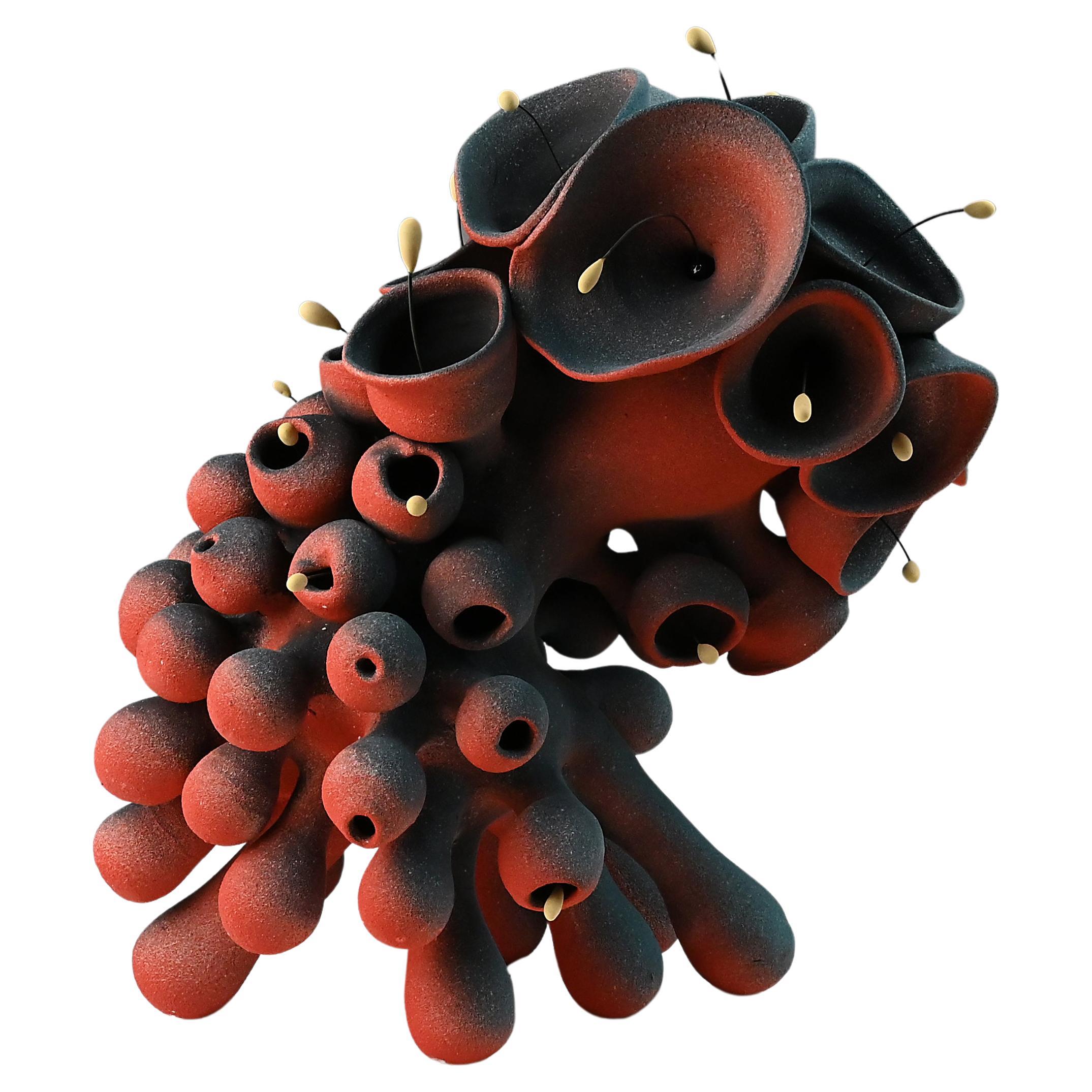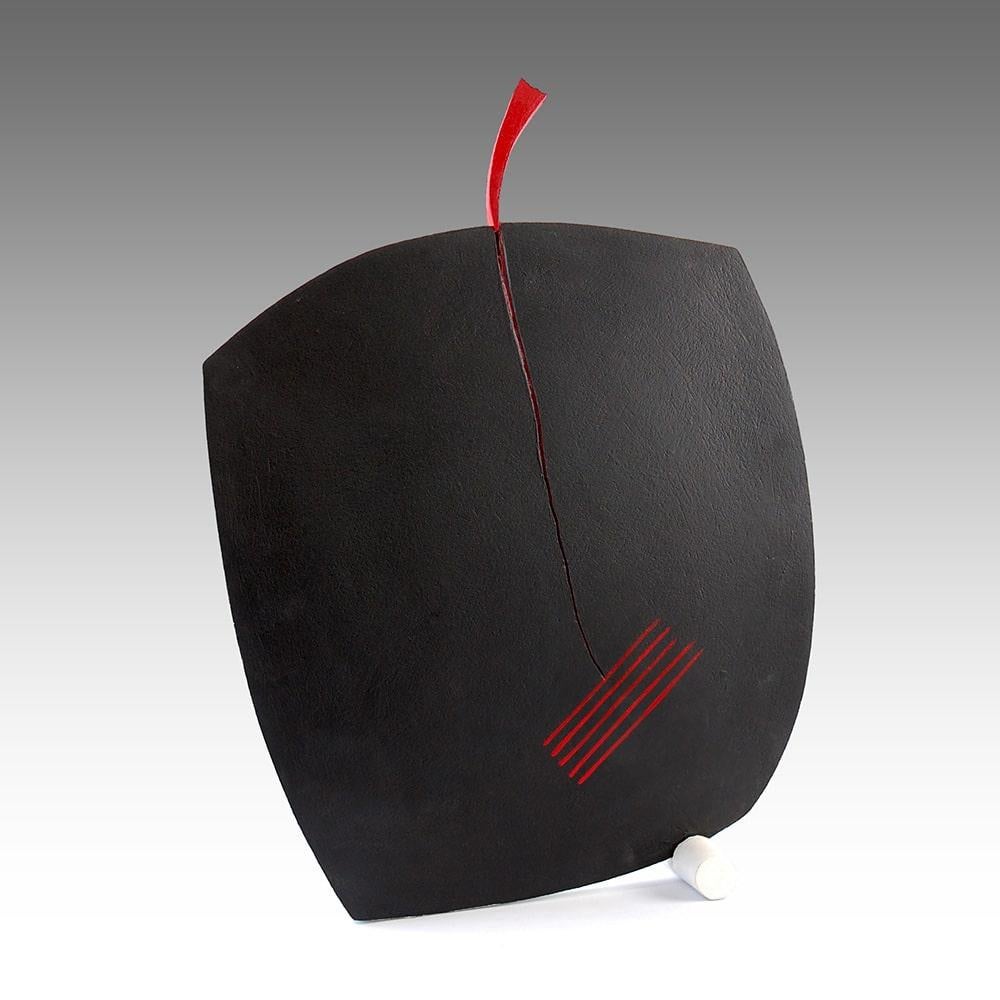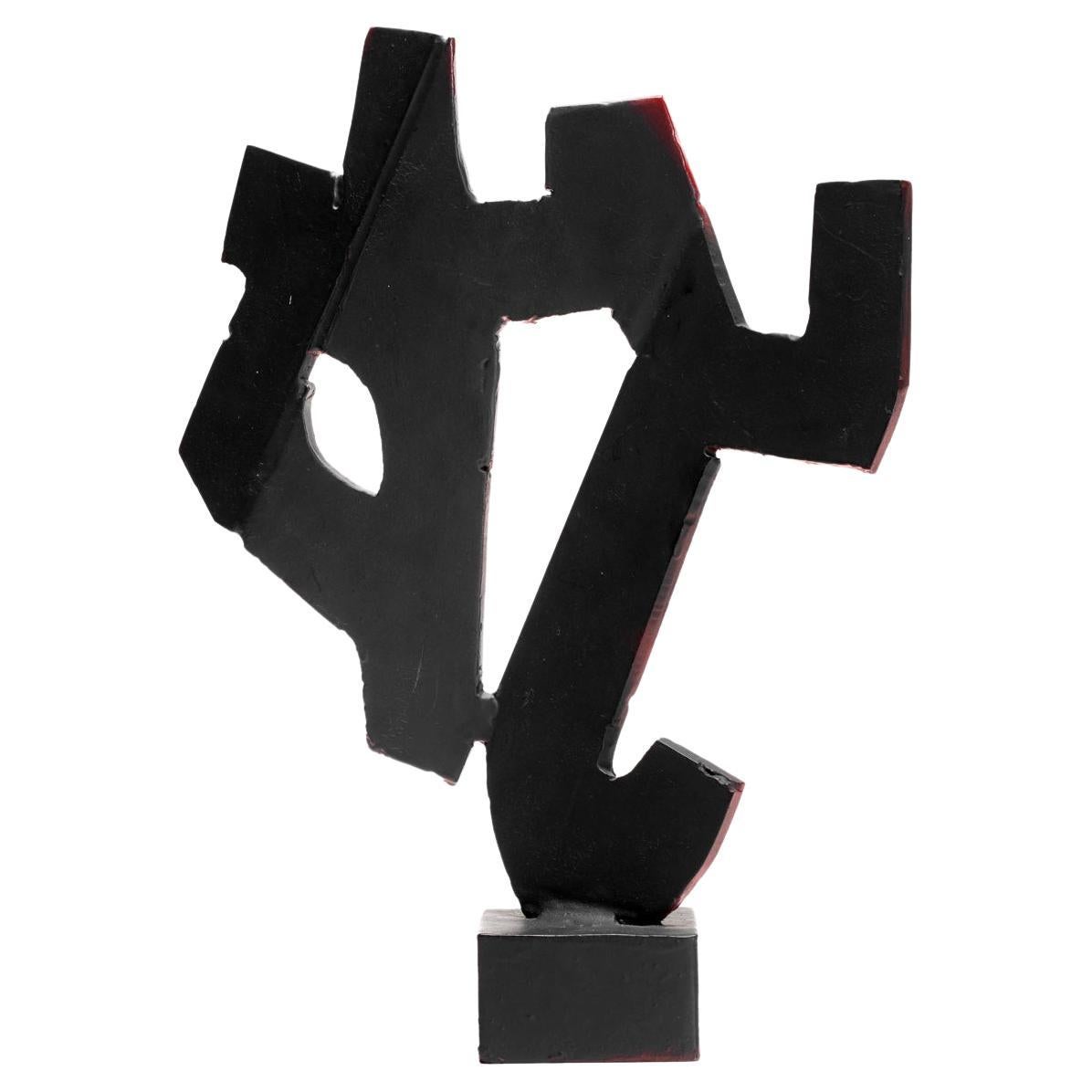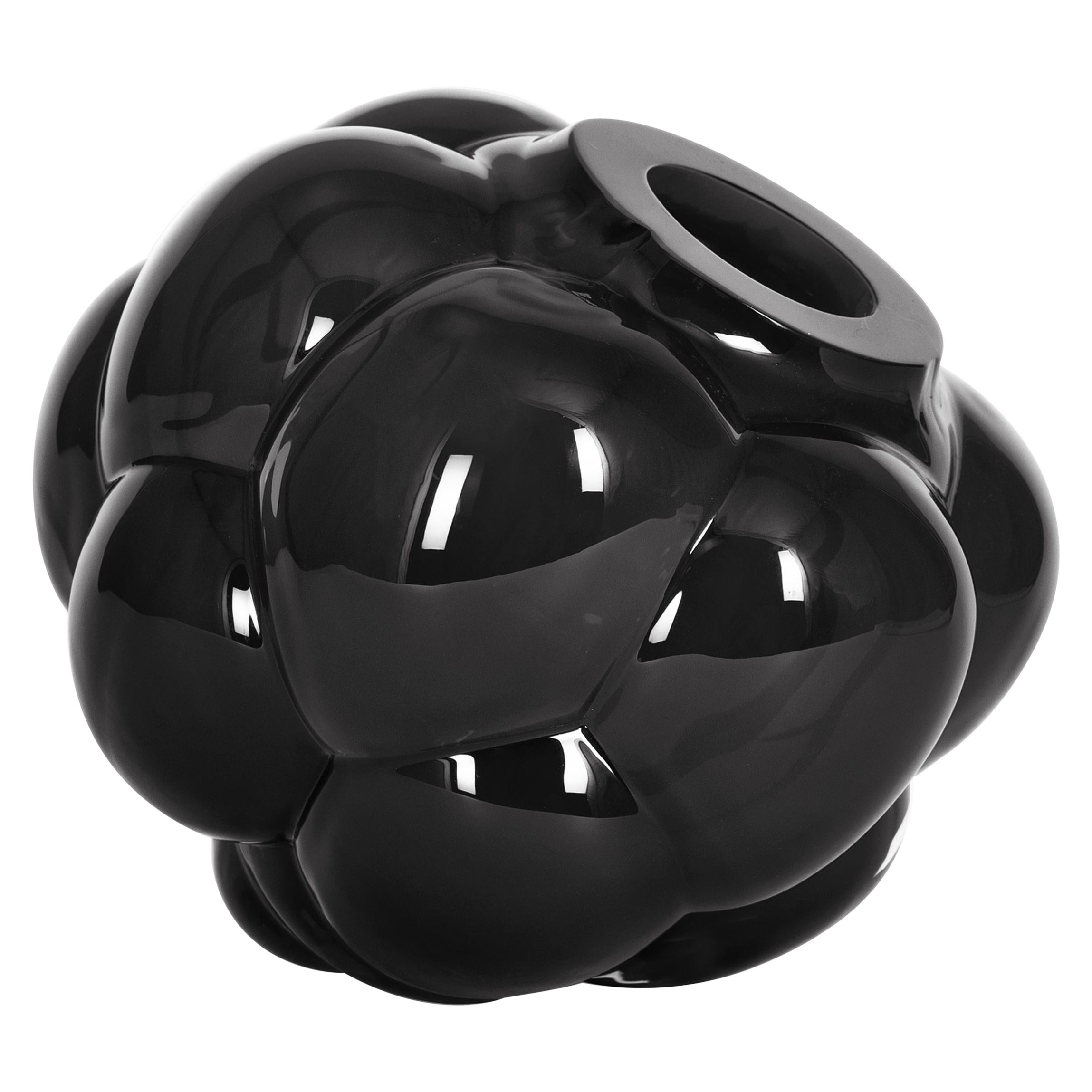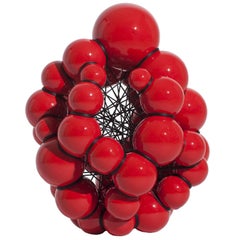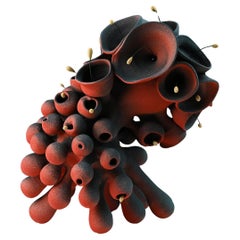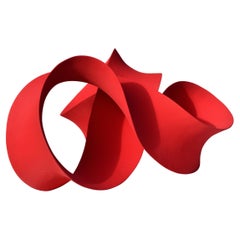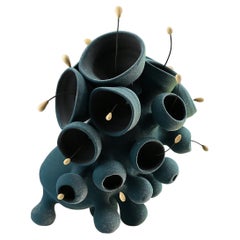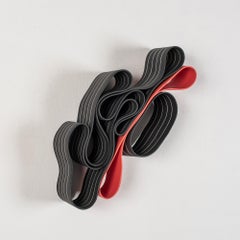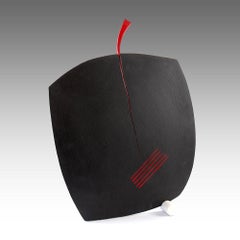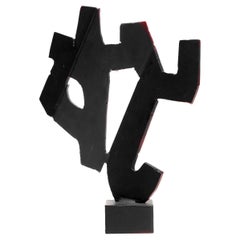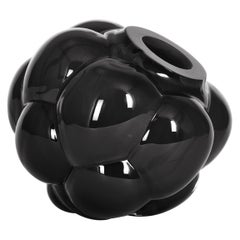Items Similar to Black and Red Ceramic and PVC Sculpture, Steen Ipsen
Want more images or videos?
Request additional images or videos from the seller
1 of 5
Black and Red Ceramic and PVC Sculpture, Steen Ipsen
$7,000
£5,319.53
€6,122.37
CA$10,017.36
A$11,006.20
CHF 5,675.83
MX$131,865.45
NOK 72,065.56
SEK 67,630.59
DKK 45,725.54
About the Item
Tied Up 21, 2016, (Ceramic, PVC, C. 13.5 in.h x 9 in.w x 9 in.d, Object No.: 4144)
Steen Ipsen was born in 1966 in Denmark and lives and works in Copenhagen. He graduated in 1990 from the Danish Design School. From 1996 – 2004 Steen Ipsen was head of the Institute of Glass and Ceramic at the Danish Design School.
Steen is part of the avant-garde group of cutting-edge Danish ceramic artists. His works are distinguished by their high level of craftsmanship.
With his “Tied Up” sculptures he lays down special rules for how his works should be structured and designed. A common feature of his works is variations of geometric systems based on organic and mineral growth principles such as crystallization, cell division and cell fission. Methodology and chaos as well as simple and complex structures are intertwined.
The principal features of the “Organic Movements” sculptures are the objects’ movements and the convex and concave curves. Highlighting these curves and designs is what is significant to him. In some of Ipsen's organic works, he also shows us an interpretation of how spherical shape elements try to work their way out through the object’s surface.
Ipsen works with monochrome glazes. The surface decoration of the “Organic” sculptures and the strings of leather or PVC of the “Tied Up” pieces form a contrast with the object’s shape and express the influence of the decoration on the sculpture’s movements.
Steen´s works of art express vigorous vitality, but also a clear graphic expression. His vision is to put the pieces in a spatial context.
- Creator:Steen Ipsen (Artist)
- Dimensions:Height: 13.5 in (34.29 cm)Width: 9 in (22.86 cm)Depth: 9 in (22.86 cm)
- Materials and Techniques:
- Period:
- Date of Manufacture:2016
- Production Type:New & Custom(One of a Kind)
- Estimated Production Time:Available Now
- Condition:
- Seller Location:New York, NY
- Reference Number:Seller: Object No.: 41441stDibs: LU889733774632
About the Seller
5.0
Recognized Seller
These prestigious sellers are industry leaders and represent the highest echelon for item quality and design.
Established in 2006
1stDibs seller since 2010
23 sales on 1stDibs
Typical response time: 5 hours
- ShippingRetrieving quote...Shipping from: New York, NY
- Return Policy
Authenticity Guarantee
In the unlikely event there’s an issue with an item’s authenticity, contact us within 1 year for a full refund. DetailsMoney-Back Guarantee
If your item is not as described, is damaged in transit, or does not arrive, contact us within 7 days for a full refund. Details24-Hour Cancellation
You have a 24-hour grace period in which to reconsider your purchase, with no questions asked.Vetted Professional Sellers
Our world-class sellers must adhere to strict standards for service and quality, maintaining the integrity of our listings.Price-Match Guarantee
If you find that a seller listed the same item for a lower price elsewhere, we’ll match it.Trusted Global Delivery
Our best-in-class carrier network provides specialized shipping options worldwide, including custom delivery.More From This Seller
View AllModern Red Ceramic Sculpture by Steen Ipsen
By Steen Ipsen
Located in New York, NY
Tied Up 31, 2016. (Ceramic, PVC, C. 15.3 in. h x 11.8 in. w x 11.8 in d. Object No.: 3526)
Steen Ipsen was born in 1966 in Denmark and lives and works in Copenhagen. He graduated in...
Category
21st Century and Contemporary Danish Centerpieces
Materials
Ceramic
Unique Red and Black Organic Sculpture, Toni Losey
By Toni Losey
Located in New York, NY
Victoria, 2022 (Ceramic, C. 13.3 in. h x 13.3 in. w x 8.7 in. d, Object No.: 4016)
Toni Losey’s work hums with an underlying current of rhythm and organization. The repetition foun...
Category
21st Century and Contemporary Abstract Sculptures
Materials
Ceramic
Swirling Red Abstract Contemporary Sculpture by Merete Rasmussen
By Merete Rasmussen
Located in New York, NY
Swirling Red, 2023 (Ceramic, C. 13 in. h x 22 in. w x 17.7 in. d, Object No.: 4191)
Merete works with abstract sculptural form and is interested in the way one defines and comprehen...
Category
21st Century and Contemporary Abstract Sculptures
Materials
Ceramic
Unique Colorful Sculpture, Toni Losey
By Toni Losey
Located in New York, NY
Brigette, 2022 (Ceramic, C. 9.8 in. h x 9.4 in. w x 7.9 in. d, Object No.: 4006)
Toni Losey’s work hums with an underlying current of rhythm and organization. The repetition found on the wheel influences her work as Losey intuitively builds sculptural forms mirroring the patterns of growth in nature. These works evolve within a set of rules developed from her personal interpretation of the natural world.
As she attempts to marry technical processes with conceptual prowess, the work that emerges seems to exist outside of the maker, something otherworldly but organic, familiar but new. Losey’s work captures natural progressions found in nature and aims to renew our connection to the planet.
Losey, born in the Canadian prairies...
Category
21st Century and Contemporary Abstract Sculptures
Materials
Ceramic
Burgundy and Gold Contemporary Glass Sculpture, Barbara Nanning
By Barbara Nanning
Located in New York, NY
Verre églomisé X, 2017 (Glass, C. 6.3 in. h x 11.4 in. w x 10.6 in. d, Object No.: 4230)
Barbara Nanning was born in 1957 in The Netherlands and lives and works in Amsterdam. She gr...
Category
21st Century and Contemporary Abstract Sculptures
Materials
Glass, Blown Glass
Price Upon Request
Unique Ceramic Sculpture by Frank Schillo
By Frank Schillo
Located in New York, NY
Frank Schillo.
“Ausschnitte,” 2008.
Impressed artist’s signature to underside. Dated.
Each part ca. 21.8 in. h x 11.2 in. w x 4.2 in. d
Category
Early 2000s German Abstract Sculptures
Materials
Ceramic, Stoneware
$5,500 / set
You May Also Like
Wall Object #2 by Simcha Even-Chen - Porcelain sculpture, red and black, lines
By Simcha Even-Chen
Located in Paris, FR
Wall Object #2 is a unique wall paper porcelain sculpture by contemporary artist Simcha Even-Chen, dimensions are 34 × 20 × 10 cm (13.4 × 7.9 × 3.9 in).
The sculpture is signed and ...
Category
2010s Contemporary Abstract Sculptures
Materials
Porcelain
Fissure by Patricia Volk - Abstract ceramic sculpture, painted clay, black, red
By Patricia Volk
Located in Paris, FR
Fissure is a unique fired clay constructed and painted sculpture by contemporary artist Patricia Volk, dimensions are 55 × 45 × 9 cm (21.7 × 17.7 × 3.5 in).
The sculpture is signed ...
Category
2010s Contemporary Abstract Sculptures
Materials
Clay, Paint
Tony Rosenthal Abstract Sculpture Blackened Steel Red Blushes
By Tony Rosenthal
Located in Bloomfield Hills, MI
SALE ONE WEEK ONLY
UNTITLED is an abstract blackened steel sculpture that has a continuous lively movement. The positioning of the heavy metal is suggestive of dance. There are similarities to the sculptors, Robert Sestok and Tony Smith, who both worked in bronze and painted steel with similar cut out pieces and abstract designs. Untitled has a joyous aura and its small size makes it a charming intimate piece. It might have been a maquette for a much larger piece. The design works in this 14" height as it would in a 14' height. There is a Letter of Certification that will accompany the sculpture.
Tony Rosenthal (1914 - 2009) is best known for creating a staggering list of monumental public art sculptures. For over seven decades Tony Rosenthal created an arc of sculpture in a variety of sizes, styles and media, including wood, steel, bronze, brass, cement and aluminum. Every day millions see, enjoy and interact with art created by Rosenthal in cities around the world. In New York City alone, five Rosenthal public art sculptures have been beloved and visible 24/7 for over four decades, yet Rosenthal is not a household name. Art dealer Joseph K. Levene, told The New York Times, Tony Rosenthal "reminds me of a character actor. You know the face but not the name. With him, you know the art."
Tony Rosenthal dedicated his life to creating art and actively created sculpture everyday in his Southampton, New York studio until he passed away at the age of 94, July 28, 2009. At nine Rosenthal learned the fundamentals of carving sculpture when his mother, an opera singer enrolled him in children's classes at the Art Institute of Chicago where he learned how to carve sculptures in soap. In 1936 Rosenthal earned a B.F.A. from the University of Michigan, and in 1952 became the first instructor of sculpture at the University of California, Los Angeles. In 1950 Rosenthal was recipient of the San Francisco Museum of Modern Art’s sculpture award; in 1967, Rosenthal received the outstanding achievement award from the University of Michigan and in 1963 a Ford Foundation Grant.
After graduating from the University of Michigan, Rosenthal became studio assistant to Alexander Archipenko, the figurative master sculptor, casting bronzes in exchange for sculpture lessons; at night, Rosenthal taught evening classes in drawing and sculpture. In 1939, Rosenthal enrolled at Cranbrook Academy of Art, studying with Carl Milles, Cranbrook's sculptor in residence; there, Rosenthal forged friendships with husband and wife designers Charles Eames and Ray Eames and the sculptor Lilian Swann Saarinen the wife of architect, Eero Saarinen.
Decades later Rosenthal acknowledged his gratitude to Cranbrook by donating his archives to them. The Cranbrook Cube, 1984, a 90" painted aluminum cube is in the Cranbrook Museum collection. In 1942, Rosenthal was drafted into the U.S. Army; while stationed in Paris Rosenthal forged friendships with George Braque, Andre Derain, Le Corbusier and Constantin Brancusi, routinely organizing and accompanying groups of soldiers on studio visits. Through multiple visits to Brancusi's Paris studio, Rosenthal learned to create and forge metal sculpture...
Category
Late 20th Century American Modern Abstract Sculptures
Materials
Steel
Kosta Boda Berry Tales Black
By Ellen Ehk Åkesson
Located in Wilkes Barre, PA
Ellen Ehk Åkesson is a Swedish glass artist who tells stories of the mysterious forest through her art glass, such as Berry Tales – a bubbling, bulbous berry plucked directly from th...
Category
21st Century and Contemporary Swedish Figurative Sculptures
Materials
Crystal
$600 / item
Black TAR Teddy and Red Apple Sculpture, 21st Century by Mattia Biagi
By Mattia Biagi
Located in Culver City, CA
This is a new work by Mattia Biagi
Sculptural Tar stuffed animal and resin apple.
Category
21st Century and Contemporary American Abstract Sculptures
Materials
Metal
$3,600 Sale Price
20% Off
Red and Black Vase, Contemporary Blown Glass Sculpture by David Ruth
By David Ruth
Located in Long Island City, NY
Red and Black Vase
David Ruth, American
Blown Glass, Signed
Size: 10 x 3.25 x 3.25 in. (25.4 x 8.26 x 8.26 cm)
Category
1980s Abstract Abstract Sculptures
Materials
Blown Glass
More Ways To Browse
Steens Denmark
Vera Want
American School Sculpture
Andree And Michel Hirlet
Art Brut Sculpture
Bas Relief Abstract
Cosmin Florea
Jere Ribbon Sculpture
Kieff Bronze
Leontine Furcy
Magiscope Sculpture
Mid Century Modern Soapstone Sculpture
Peter Bramhall Glass Orb
Po Shun Leong
Sea Urchin Sculpture
Soetsu Yanagi
Stainless Steel Ribbon Sculpture
Studios Loho
